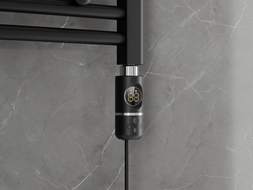
Silicone is the most commonly used material for sealing. It is used both for window installation and for securing shower cabins, sinks, bathtubs, etc. It is a very flexible material, which makes it easy to adapt to the shapes of the installed fixtures. Moreover, it perfectly protects against water infiltration, for example, outside the shower cabin. However, sometimes silicone joints can become covered with difficult-to-remove mold. What can be done, or rather what should be done in such a situation? Can one deal with this using home remedies?
Why Should Mold in the Bathroom Be Removed?
Black spots appearing on silicone seals or joints are not just a visual defect. They also pose a serious health risk that should not be overlooked. Mold in the bathroom most often appears in the shower cabin and around the bathtub, which are areas constantly exposed to water. Humidity and high temperatures create a specific microclimate that favors mold growth.
If you do not pay attention to the stains appearing on the silicone that accompany the growth of mold, you will end up with a significant problem. In a short time, the seals or joints will be covered with black mold, which has a negative impact on our health. Mycotoxins produced by mold spores are very harmful, especially if you are continuously exposed to inhaling them. A runny nose and general fatigue, respiratory tract infections, and skin irritation are just the beginning of the problems that can arise from the development of mold in the bathroom.
How to Effectively Clean a Dirty Surface?
The simplest method is to ensure that mold does not appear in the bathroom in the first place. Unfortunately, few people have the time and determination to meticulously wipe all elements exposed to the development of mold after every bath. It is important to respond as quickly as possible to the first symptoms. You will easily see black mold in the shower cabin; it appears as small spots on the silicone. If you remove them quickly, you will prevent the growth of fungi.
However, if mold has already developed on the silicone, you have several options for effectively removing it. Depending on the level of contamination, you can choose to tackle the mold with home remedies or by using prepared mold removal products. These are usually fungicidal preparations that also have bleaching properties but do not negatively affect the structure of the silicone.

Remove Mold from Silicone Using Home Remedies
Sanitary silicone is an excellent solution for ensuring tightness between various types of joints. Unfortunately, it is also a great breeding ground for mold, especially in the bathroom, where there is high humidity and temperature. Fortunately, bathroom mold can also be removed using methods that do not require the purchase of fungicidal preparations. If you want to remove mold from silicone, you can first reach for baking soda.
First, sprinkle the dirty surfaces with baking soda, and then scrub them using a toothbrush. It should not be too hard, and scrubbing should not be too intense; the goal is not to remove the joint or silicone but to get rid of the mold. After scrubbing, rinse the contaminated areas with water, thus removing the remnants of the mold. Additionally, you can use a natural fungicide in the form of tea tree oil. Add it to the baking soda, which should be sprinkled on the contaminated area. The action of the essential oil not only provides a pleasant scent but is also a proven method to prevent the formation of mold.
How to Remove Mold and Fungi from the Bathroom? A More Radical Approach
If home methods for removing mold are ineffective, or if you simply do not want to use baking soda, you can turn to more radical methods aimed at mold removal. There is a wide range of products available on the market designed specifically for removing black mold in the bathroom. By choosing a high-quality product, you make the task easier, but remember that these are usually quite strong products, and it is advisable to protect your hands with rubber gloves during usage. The product should be applied to the area where mold is present, wait for the time specified on the packaging, and rinse it with clean water along with the mold.
There may be situations where neither store-bought products nor baking soda can effectively remove the mold. In such cases, it is best to remove the joints or seals, thoroughly clean the empty areas, and apply new ones. It is also worth considering whether it might be better to opt for epoxy joints in this case, as they are much more resistant to high humidity.



















